When Xavi Hernandez, the Barcelona ex-midfielder, played his last soccer match in the Tehran’s Azadi sport complex against Iranian club Persepolis, Iranian officials didn’t want him leaving Iran without one or two Persian souvenirs. The maestro was, for the most part of his professional career at the sending end of a pass but this time. This time, however, he was at the receiving end of some unique Persian handicrafts. One of the greatest footballers of our generation received a handcrafted Persian vase decorated using the art of Minakari and a tapestry of an old Persian column.
For a foreigner spending his last day in Iran, nothing is more satisfying than leaving the country loaded with Persian souvenirs. Xavi hung up his boots, walked across the green pitch for the last time and left Iran, but not empty-handed. He took some of the finest symbols of Iran with him to remind him of the glory and generosity of this beautiful country and its people.
What Persian souvenirs to shop for and where to find them?
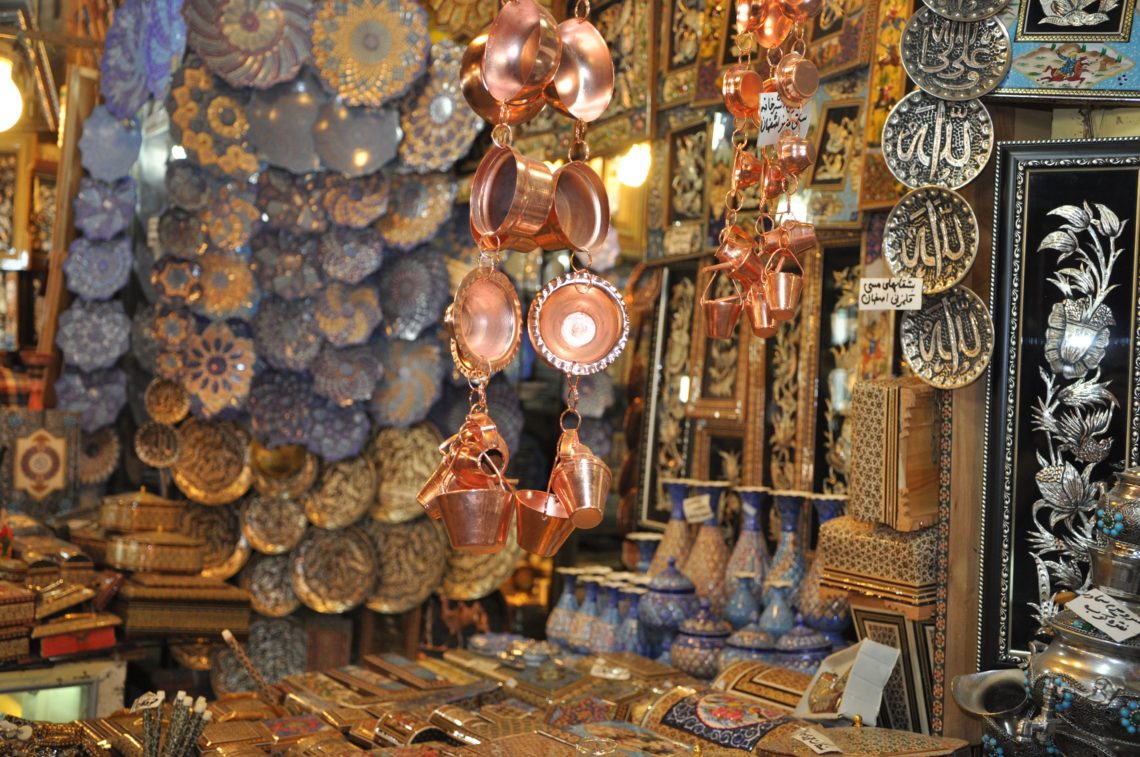
Copper handicrafts in Iran
A trip to Iran without any Persian souvenir is like going to Disneyland, the happiest water-based ride in the world, without riding “It’s a small world.”
Tehran, the capital of the country, has an enormous market called the “Grand Bazaar” which has some Persian souvenirs in its long stony corridors and can serve as the last hope for desperate tourists who are out of time and just want get it over with but, each city of Iran originates its own unique handicraft, textile, and food. The skilled craftsmen living in these cities dedicate their lives to create certain types of Persian goodies and art. The blood of old Persia runs unstoppable through the veins of these professional masters and if you want a taste of their art, you need to make room in your schedule to travel to different cities of Iran. for luxury accommodations in Tehran, check out this article: luxury hotels in Tehran.
Here are some cities to begin with:
Isfahan Souvenirs
Isfahan has some of the most interesting handicrafts, textiles, and candies in Iran. The hub for ancient Persian Minakari or Enameling lies in the old bazaars of Isfahan. Ghalamkari is another masterpiece handicraft displaying the true art of Isfahan craftsmen. you can book Isfahan hotels easily with 1stQuest.
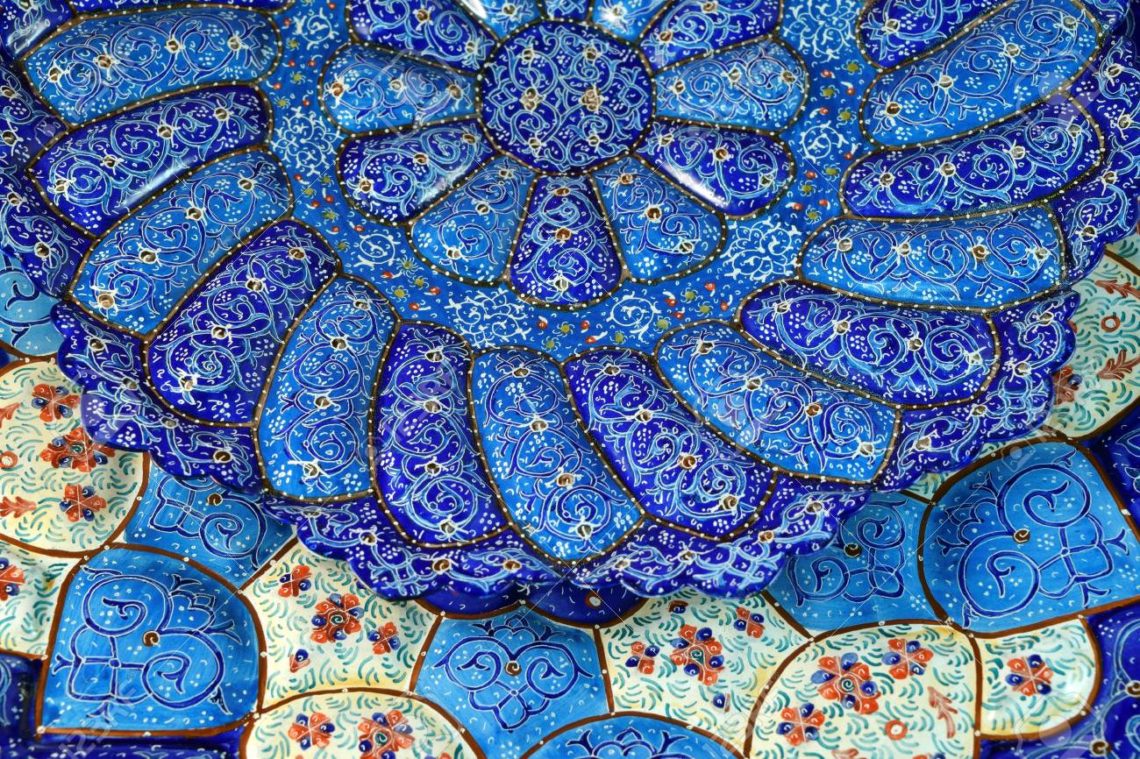
Minakari Isfahan
As for sweets, Gaz (a beautiful Persian confection made of pistachios and other spices such as saffron and cardamom), Poolaki (pistachios, sesame, or other ingredients roasted in lemon juice), and Sohan (a kind of brittle toffee made of saffron, wheat sprouts, flour, egg, and rose water) are recommended to the foodies. you can book traditional hotels in Isfahan through 1stQuest.
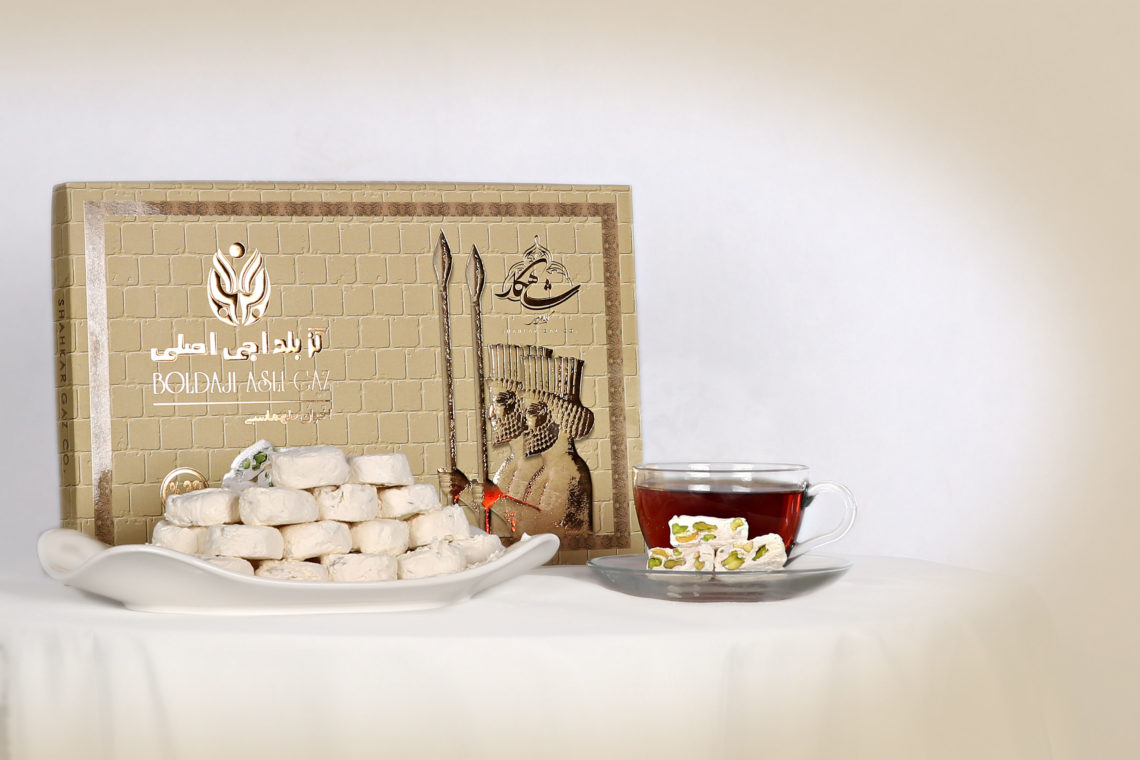
Gaz, Isfahan souvenir
Other important Persian souvenirs from Isfahan include pistachios, nuts, spices, rugs, and Khatamkari.
Yazd Souvenirs
Home to many national and international heritage sites, Yazd generates some most fascinating textile and handicrafts while keeping your mouth sweet from all the wonderful foods and candies. Be on a watch-out for “Qottab” in Yazd. Qottab or Ghotab is a traditional Iranian almond and walnut-filled pastry that is made any time of year.

Qottab, Yazd souvenir
In your journey through the historical streets of Yazd, you will end up finding Persian textile called Termeh, a luxurious Persian hand-woven cloth made to stunt any observer. Termeh is woven with silk and wool and sometimes even with gold or silver. you can book historic hotels in Yazd through 1stQuest.
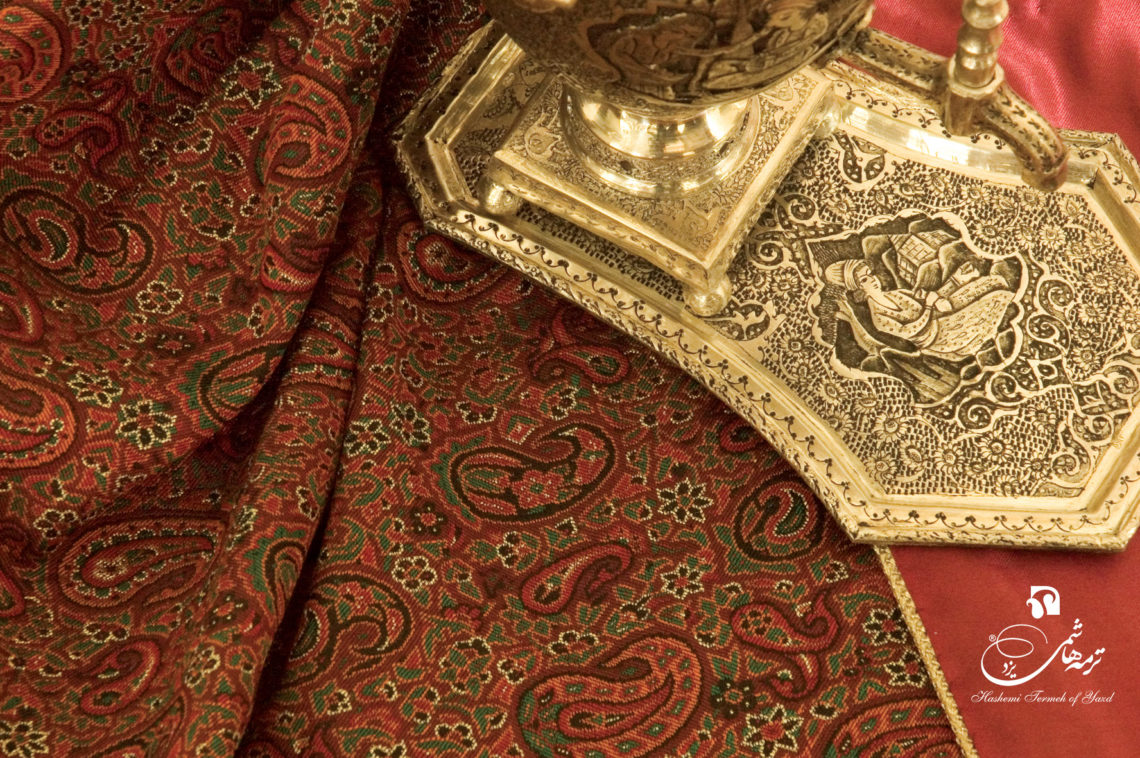
Termeh, Yazd souvenir
Kashan Souvenirs
A goldmine of the most luxurious and oldest hand-woven Persia rugs and carpets. Their silk designs are one of a kind, and for anyone looking to make their first Persian rug purchase, the Kashan is a fantastic choice for a Persian souvenir.
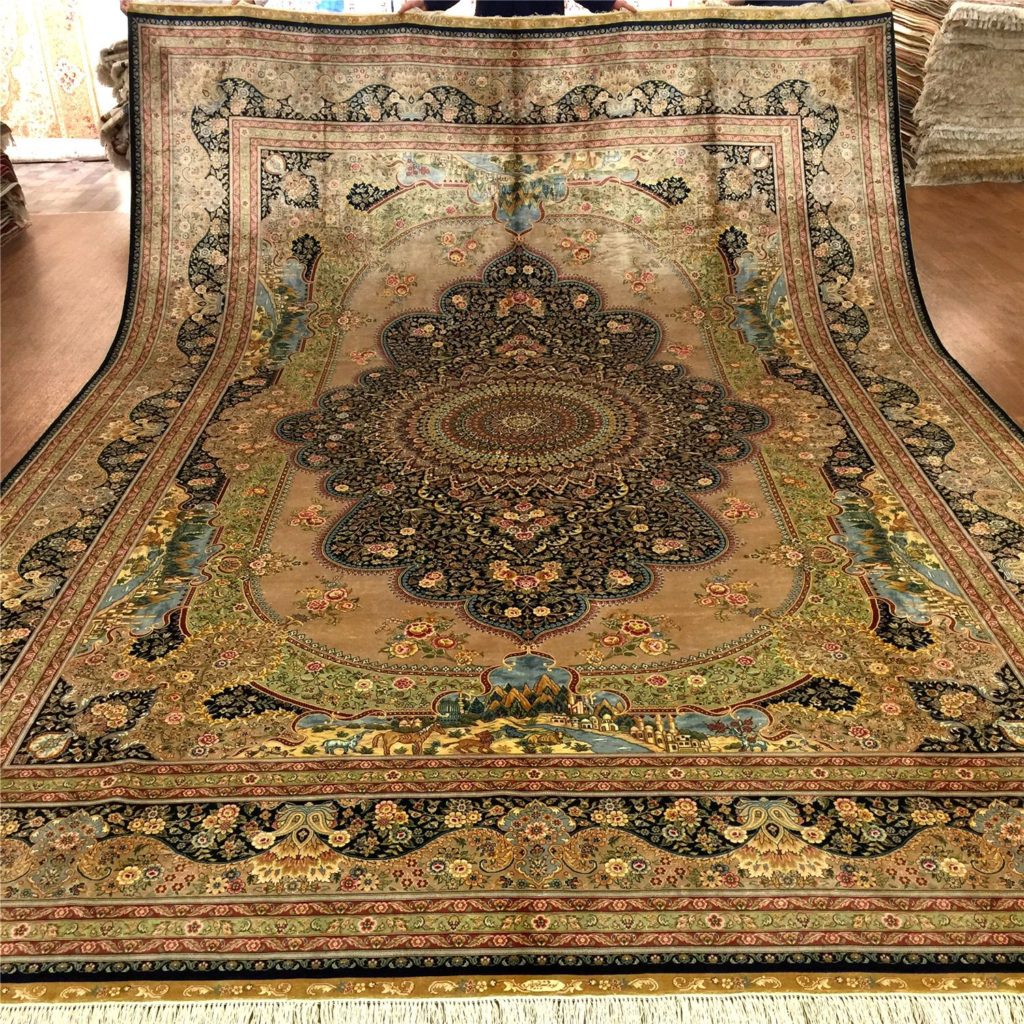
Persian Rug, Kashan souvenir
The copper line in Kashan, one of the two main alleys going through the old bazaar, is packed with shops for copper-made handicrafts. The reddish-brown color of masterfully handcrafted copper pots, pans, and mugs clumped on top of each other will definitely petrify you. you can book Kashan hotels easily through 1stQuest.
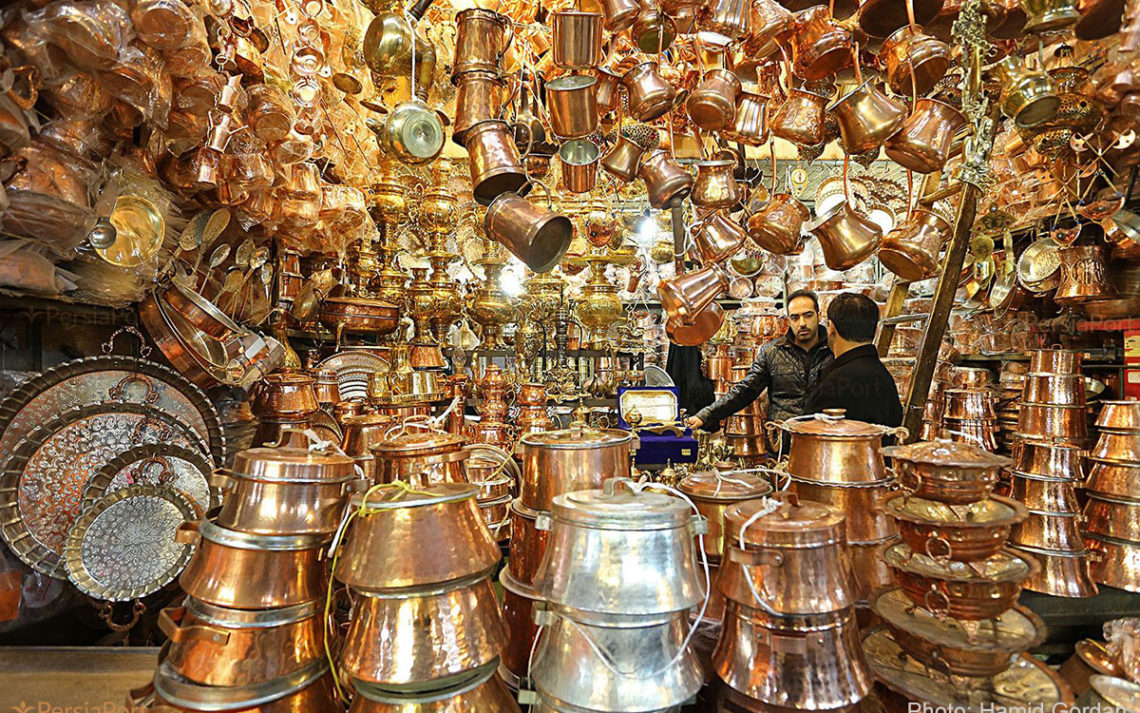
Handcrafted copper pots, pans, and mugs
Mashhad Souvenirs
If you’re traveling to Iran but not planning to visit Mashhad, you should reconsider. Mashhad is not only about pilgrimage and martyrdom. It also has the richest resources of saffron, barberry, dried fruit, and not to mention the finest turquoise in Iran. A walk through the old “Bazaar Reza” gives you immediate access to see these marvelous Persian goodies close-up, taste some of these aromatic herbs, and wear one or two turquoise rings before you absolutely fall in love with them and buy some. you can book Mashhad hotels at the ultimate ease.
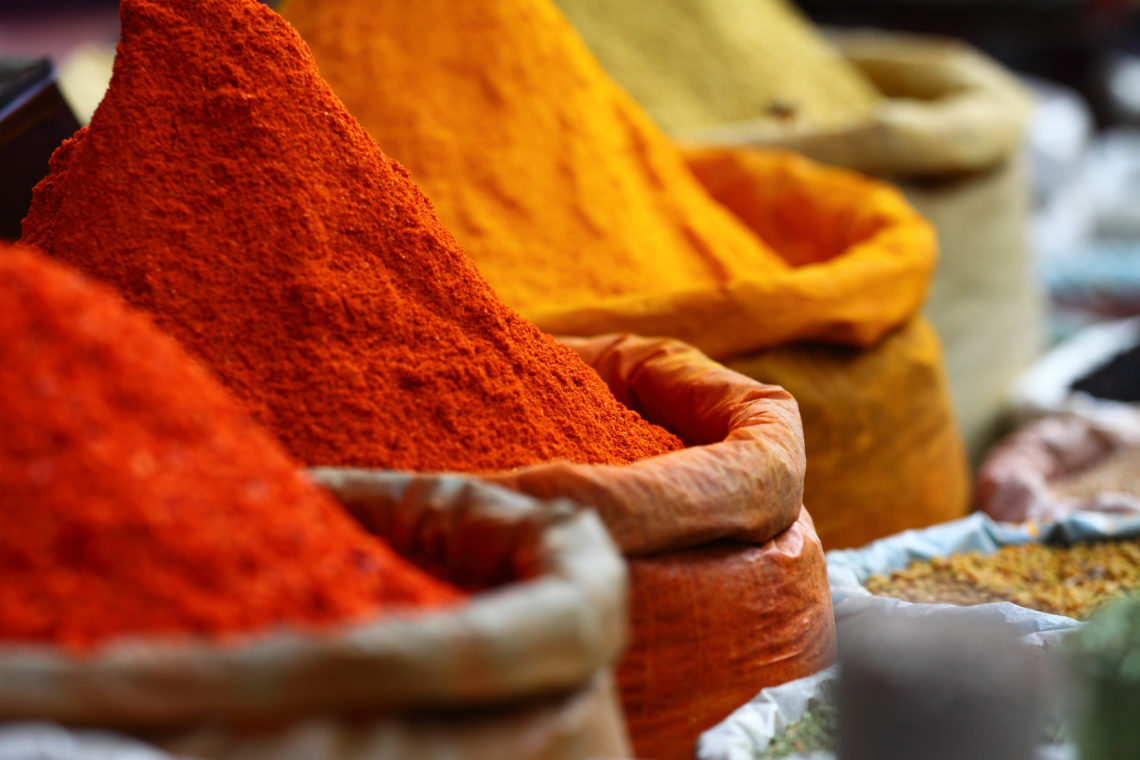
Spices, Mashhad Souvenirs
Shiraz Souvenirs
The pleasure of reading verses created by globally-celebrated poets like Saadi and Hafez in a Persian garden, their grass newly trimmed doesn’t reach its pick if you don’t have a “Faloodeh” in hand. Faloodeh or Paloodeh is a traditional dessert made of Iranian noodles sunken in sweet fruit syrup with sugar and rose water. Faloodeh Shirazi is famous all across the country.
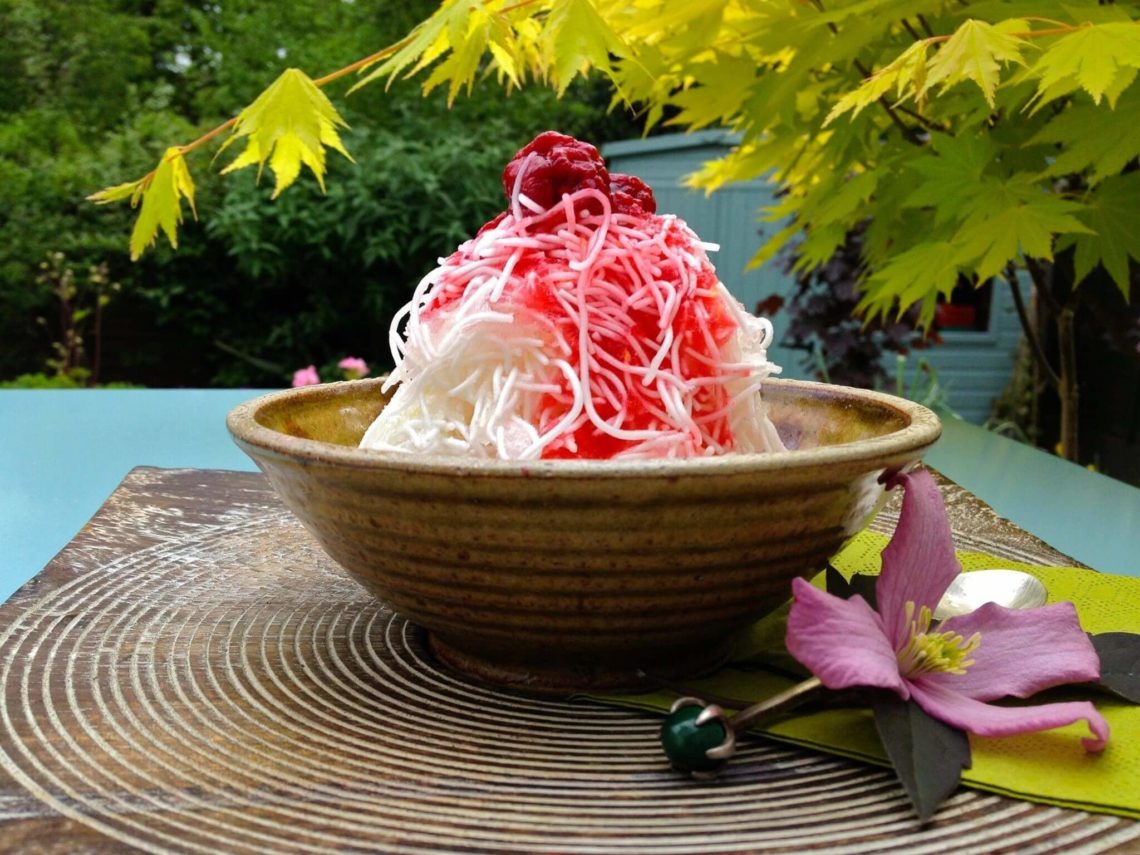
Faloodeh Shiraz
In Shiraz, the most famous Halva is known as Halva-ye Kaseh which is a rice flour Halva with lots of saffron. You can easily find it in the numerous pastry shops in town and restaurants in Shiraz. Persian souvenirs generated in Shiraz include pottery, Khatamkari, wood-carving, and glassblowing. you can book Shiraz hotels at the best rates through 1stQuest.
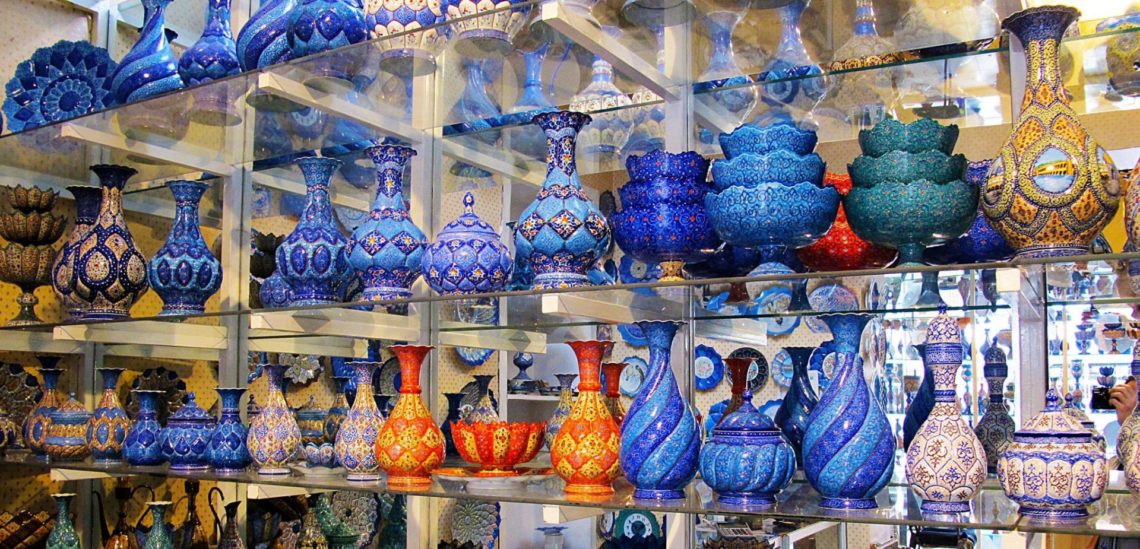
Khatamkari Shiraz
Tabriz Souvenirs
Tabriz is located in the heart of the Azari lands in Iran and home to many sweet mouth-watering souvenirs and confections. Like many Iranian cities, Tabriz raises many craftsmen specializing in wood-craving, pottery, and rugs.
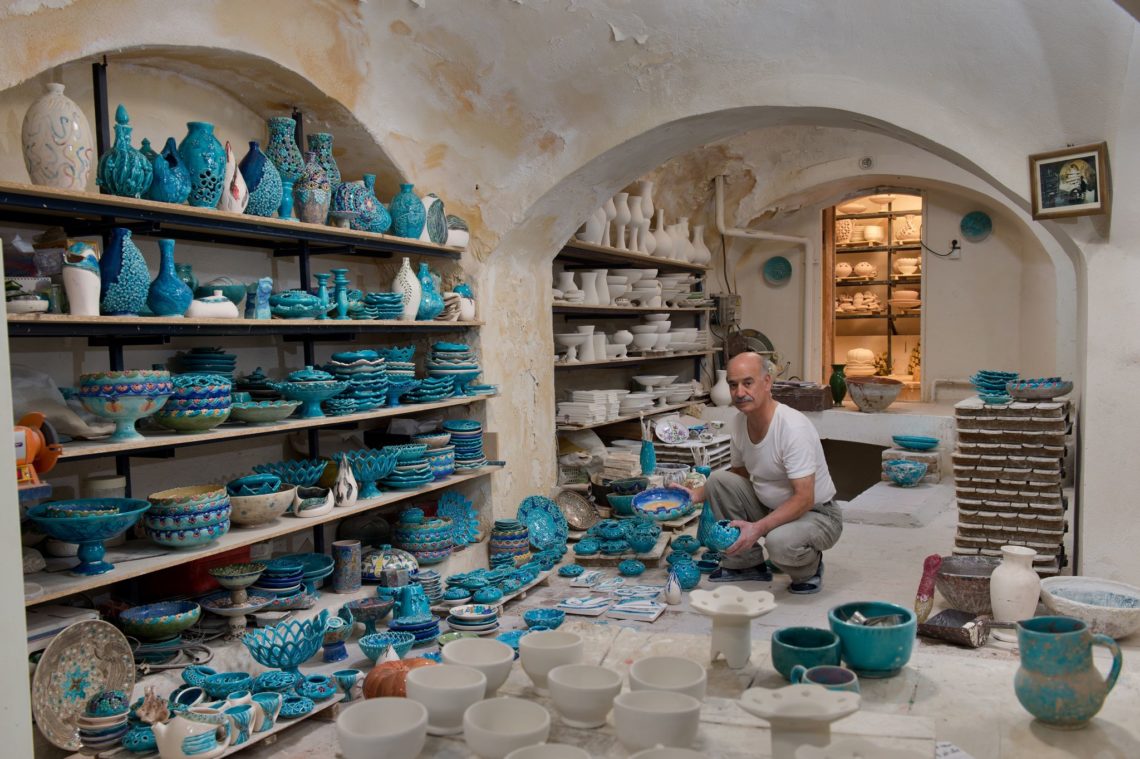
Pottery Tabriz
However, what makes Tabriz stand out is its unique pastries and sweets. “Riss”, “Noqa”, and “Rahat-ol-Holqom”, are the other kinds of delicious sweets that could be a great souvenir with various kinds of packing. These sweets have nectar inside, so having a cup of tea beside them is recommended. you can book top hotels in Tabriz with 1stQuest.com
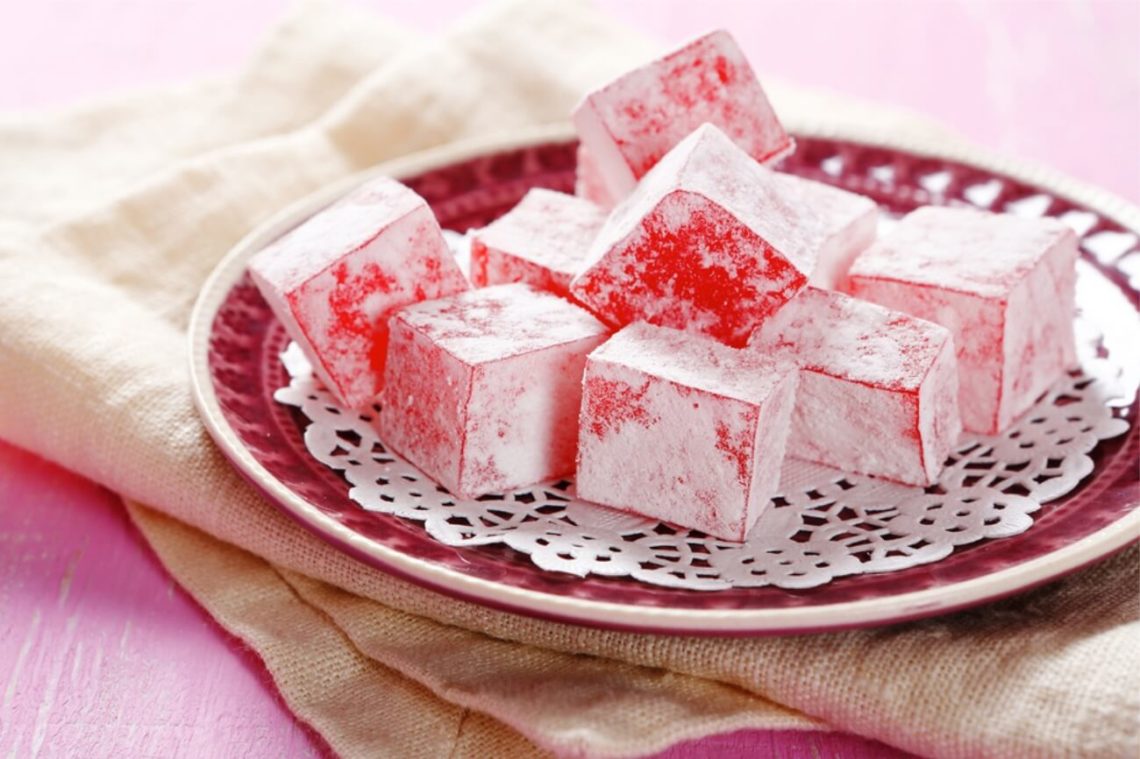
Noqa, Tabriz Souvenir
Now that you know what Persian souvenirs to buy and where to find them, there is another thing you need to take into consideration. Tourism means new jobs for all types of people, pure and evil souls. Like any other country dealing with tourists on a daily basis, at one point, nasty things are bound to happen. Iranians are trustworthy and lovely people who take it upon themselves to help strangers. However, every once in a blue moon, you might come across some a souvenir shop owner who overcharges you for a piece and tries to rip you off. These greedy individuals darken the face of an entire nation.
There are some things you can do so you won’t go through the same frustration that a bunch of Chinese tourists experienced some years ago. Unfortunately, they were ripped off by their local guide in Isfahan and paid a lot more for a couple of rugs than they should have.
First off, Google the prices of Persian souvenirs and handicrafts before you actually start your journey to Iran. Of course, various materials and artwork from different cities of Iran don’t cost the same but you’ll have a general idea of how much you will need to pay for a pair of Persian rugs.
How to haggle in Iran?
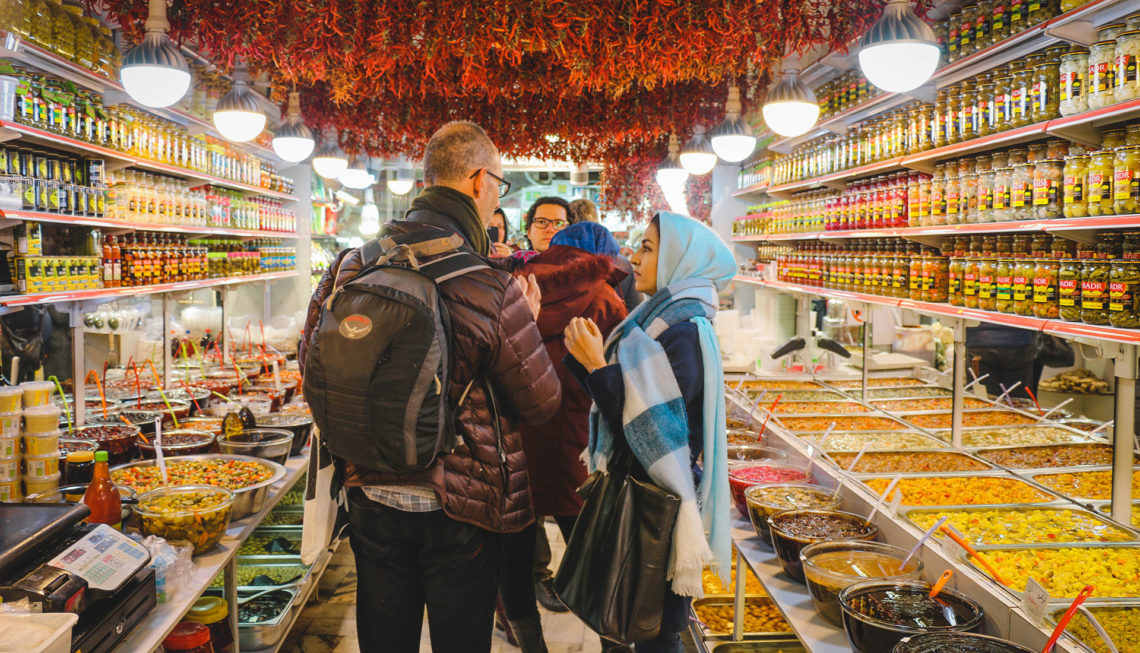
Pickles shop
So now you know how to find the right place with the right prices but is that all? What about haggling? Is it okay to bargain over the prices in Iran?
The answer is yes. Haggling, “Chaneh-Zadan” in Farsi, is an essential part of Iranians’ trade routines and it can be heard in almost every exchange but, some businesses are off limits. For example, you can’t walk into a grocery shop and ask for a discount, that’s just socially unacceptable. However, if you’re shopping for clothes and fashion accessories, you better put your hardcore mask on and learn how the laws of Chaneh-Zadan.
In Iran, Chaneh-Zadan is a social etiquette just like Tarof. Think of it as a dance of words. Whoever knows the moves better has a better chance of leading the dance and getting what they want.
